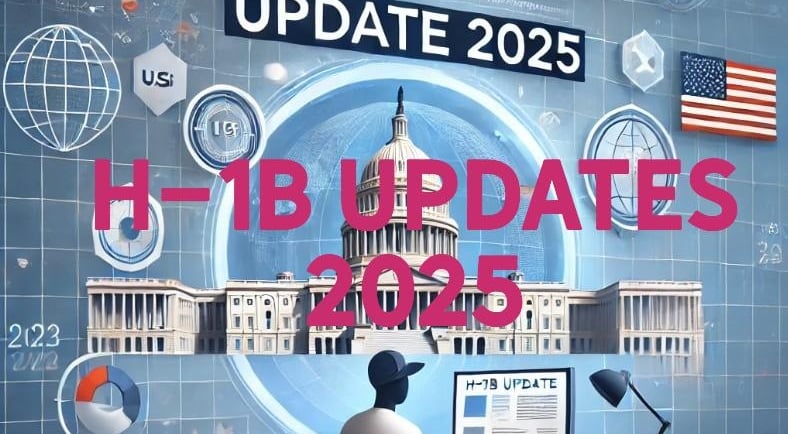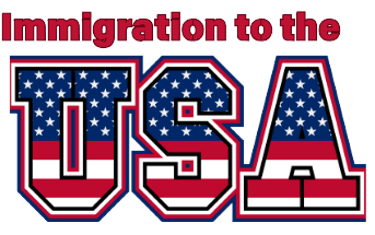The H-1B Visa Program 2025 updates: How DHS is Addressing U.S. Labor Needs
The Department of Homeland Security (DHS) has announced a landmark final rule to modernize the H-1B visa program 2025. It aims to help U.S. employers fill critical job vacancies mor...
Md Abdullahel Kafi
12/20/20247 min read


The H-1B Program
The H-1B program is a visa classification established by the U.S. government that allows American employers to temporarily employ foreign workers in specialty occupations. The primary purpose of this program is to fill critical gaps in the U.S. labor market, particularly in fields requiring specialized knowledge and skills, such as technology, engineering, mathematics, and more. This program plays a significant role in enhancing the U.S. economy by ensuring that companies can access a global talent pool when they encounter shortages of qualified domestic candidates.
To be eligible for the H-1B program, both the employer and the foreign worker must meet specific criteria. Employers must demonstrate that the position offered requires a specialized level of expertise and that they are unable to locate a qualified individual in the local labor market. They must also comply with labor laws to ensure that hiring a foreign worker will not adversely impact the wages and working conditions of U.S. employees. On the other hand, foreign workers must possess a valid job offer from a U.S. employer and have the necessary credentials, such as a bachelor’s degree or its equivalent in the relevant field, to qualify for the visa.
The application process for obtaining an H-1B visa involves several steps. Initially, the employer must file a Labor Condition Application with the U.S. Department of Labor to establish the necessity of hiring from abroad. Following this, the employer submits a petition to the U.S. Citizenship and Immigration Services (USCIS). The H-1B visa program is capped annually, which further emphasizes its competitive nature. Understanding the H-1B program's core aspects is essential for grasping how it addresses labor needs in the United States while creating opportunities for skilled foreign workers.
Recent Changes and Updates by DHS
The Department of Homeland Security (DHS) announced a new rule enhancing the H-1B visa program to help U.S. employers fill critical job vacancies more efficiently. The rule streamlines the application process, modernizes the definition of specialty occupations, and increases flexibility for nonprofit and research organizations. It also allows F-1 visa students transitioning to H-1B status to maintain lawful status and employment authorization without disruption.
Additionally, the rule strengthens oversight by granting USCIS inspection authority, ensuring job authenticity, and enforcing legal compliance. Effective January 17, 2025, employers must use an updated Form I-129 for all petitions. These changes aim to boost economic competitiveness while protecting U.S. workers.
Addressing U.S. Labor Shortages
The H-1B program has emerged as a crucial mechanism for addressing persistent labor shortages in various sectors within the United States. Industries that are most affected include technology, healthcare, and engineering, all of which are facing significant challenges in sourcing skilled professionals. The growing demand for positions requiring specialized knowledge and expertise is vastly outpacing the supply of domestic workers equipped to fill these roles. For instance, according to recent data from the U.S. Bureau of Labor Statistics, the employment of computer and information technology occupations is expected to grow by 11% from 2019 to 2029, much faster than the average for all occupations.
The healthcare sector is experiencing similar shortages, particularly in nursing and medical specialty fields, where qualified candidates are increasingly difficult to find. The American Association of Colleges of Nursing reports that U.S. nursing schools turned away more than 80,000 qualified applicants in 2021 due to insufficient faculty and clinical placement sites. Consequently, the H-1B program allows U.S. employers to recruit talented foreign workers to fill these gaps, ensuring that vital services are not disrupted.
Engineering, another key industry grappling with labor shortages, reports a demand for over 1.3 million new engineers by 2025 according to the National Society of Professional Engineers. This increasing requirement for skilled labor underscores the importance of the H-1B program in meeting the needs of American businesses and, by extension, bolstering the economy. By enabling the entry of foreign workers into the labor market, the H-1B program is essential in retaining competitive advantage and fostering innovation. As industries continue to evolve, having access to a broader talent pool will be pivotal in addressing labor shortages effectively.
Impact on Employers and the Job Market
The strengthening of the H-1B program has significant implications for employers and the broader job market in the United States. By providing access to a diverse global talent pool, businesses can fill critical roles that may not be readily available within the domestic workforce. This influx of skilled professionals supports innovation and competitiveness, particularly in industries such as technology, engineering, and healthcare. Employers often benefit from the diverse perspectives and expertise that international workers bring, enhancing creativity and problem-solving capabilities within teams.
Moreover, the H-1B program can play a crucial role in driving economic growth. By facilitating recruitment in high-demand fields, it enables companies to stay ahead of industry trends, leading to job creation. As businesses expand their capabilities through the employment of highly skilled foreign workers, they are often in a position to increase hiring for domestic roles as well. Thus, the program may contribute positively to the overall job market by encouraging business development and expansion.
However, the integration of H-1B workers into the labor market presents certain challenges. Domestic workers may express concerns about wage stagnation, particularly in fields where H-1B workers are prevalent. Employers must navigate the delicate balance between meeting business needs and addressing the workforce concerns of American workers. Additionally, the regulatory framework surrounding the H-1B program can pose hurdles for companies, such as the complexities of compliance and the unpredictability of visa allocations.
In conclusion, while the strengthening of the H-1B program offers numerous advantages to employers and can stimulate growth in the job market, it also presents challenges that need addressing. The program's success relies on equitable integration and ongoing dialogue among various stakeholders to ensure the protection of both domestic workers and the economic needs of employers.
Critiques and Challenges of the H-1B Program
The H-1B program, designed to facilitate the employment of foreign workers in specialty occupations, has been a subject of significant scrutiny and debate. Various stakeholders, including domestic workers, labor unions, and policymakers, have voiced concerns about the implications of the program on the U.S. labor market. One major critique is the perception of job displacement among American workers. Many argue that the influx of H-1B visa holders correlates with reduced employment opportunities for domestic workers in fields like technology, engineering, and healthcare, which are critical sectors of the economy.
Another prominent concern revolves around wage suppression. Critics contend that the presence of H-1B workers can lead to lower wages for U.S. employees performing similar roles. They argue that employers may prefer to hire H-1B visa holders at lower salaries, thereby exerting downward pressure on wages overall. As a result, this environment can create discontent among domestic workers who feel that their earning potential is compromised due to the competitive landscape introduced by foreign labor.
Additionally, the potential for abuse of the H-1B system has triggered alarm among labor rights advocates and lawmakers alike. Reports of companies misusing the program to sidestep employment regulations raise essential questions about accountability. Instances where businesses employ H-1B visa holders predominantly as a means of replacing higher-paid American workers have heightened skepticism about the program's intent and efficacy. Such practices not only undermine trust in the immigration system but also lead to calls for reform, designed to better protect the interests of U.S. workers.
These critiques highlight the complexities inherent in the H-1B program, revealing a landscape fraught with challenges that demand careful consideration and responsive policy measures. Addressing these concerns is vital to ensuring that the program serves its intended purpose while safeguarding the rights and interests of the domestic workforce.
Future of the H-1B Program
The H-1B visa program, integral to the U.S. workforce, is poised for significant transformation as it adapts to the evolving demands of both employers and foreign workers. Current trends indicate a growing focus on aligning the program with U.S. labor needs, suggesting a shift towards greater flexibility for businesses. Employers increasingly require skilled labor in sectors such as technology, healthcare, and engineering, and the H-1B program must evolve to facilitate this demand.
Policy directions initiated by the Department of Homeland Security (DHS) also indicate potential reforms aimed at enhancing the agility and attractiveness of the H-1B program. This includes streamlining the application process, increasing the number of available visas, and focusing on high-demand occupations. Additionally, there is an ongoing conversation regarding merit-based immigration systems, which could influence how H-1B candidates are selected based on their qualifications and the needs of the labor market.
Legislative changes are conceivable in response to both employer and advocacy group pressures. Bipartisan interest in refining immigration policies may lead to re-evaluating the existing cap on H-1B visas, fostering a more inclusive approach that addresses labor shortages while ensuring that American workers are not disadvantaged. These anticipated reforms could create a more equitable and responsive H-1B landscape.
Looking forward, employers can expect a more robust framework that supports their workforce needs, including potential pathways for employees to secure permanent residency. For foreign workers, the future of the H-1B program could mean increased options for employment and residency, as well as greater occupational stability within high-demand sectors. The interplay of policy and market demands will ultimately determine the efficacy and adaptability of the H-1B program in meeting the labor needs of the United States.
Conclusion: A Balanced Approach to Workforce Needs
In reviewing the intricacies of the H-1B program, it becomes increasingly clear that a balanced approach is vital for effectively addressing U.S. labor needs while maintaining the integrity of the job market. The program is essential for supplying skilled labor to American industries that face talent shortages, particularly in technology, engineering, and science fields. However, the concerns raised regarding potential exploitation of foreign workers and the overshadowing of domestic workforce opportunities cannot be dismissed.
To enhance the H-1B program, the Department of Homeland Security (DHS) is tasked with refining and implementing policies that reflect a commitment to economic growth while safeguarding the rights of both domestic and foreign workers. By establishing regulations that emphasize fair wages and adherence to labor standards, the DHS can ensure that the program not only attracts the talent needed for innovation but also creates a competitive environment for U.S. workers.
Furthermore, collaboration among stakeholders—including policymakers, industry leaders, and labor organizations—is crucial in crafting solutions that balance the demand for skilled labor with the protection of American workers. By fostering open dialogue and addressing the legitimate concerns associated with the H-1B program, it is possible to create a framework that meets the evolving workforce needs of the U.S. economy.
Ultimately, a well-regulated H-1B program can serve as a conduit for economic growth, capturing the benefits of globalization while ensuring equitable opportunities for all individuals in the workforce. Continuously evaluating and adapting the program will be essential as market demands shift, ultimately creating a more robust labor market that serves the interests of the nation as a whole.
uscis.gov, https://www.dhs.gov/
Key words; H-1B Visa Updates, DHS Immigration Policy, USCIS H-1B Rule 2024, U.S. Work Visa Changes, Employer Job Vacancies
